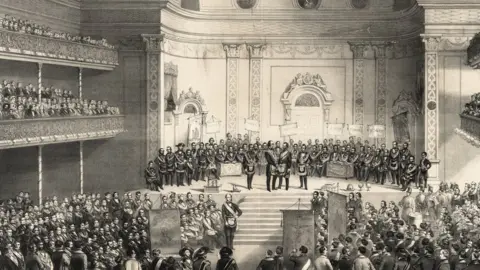Why You Should Consider the Journey to Join Freemasonin Modern Times
Why You Should Consider the Journey to Join Freemasonin Modern Times
Blog Article
Checking Out the Mysteries of the Freemason: What You Need to Know
The Freemason, a term frequently shrouded in intrigue and debate, represents a complicated tapestry of historical fact and modern myth. Established in the late 18th century, this secret society was at first rooted in the Enlightenment's ideals but has actually given that come to be associated with conspiracy theories about elite control. As we browse the beginnings, crucial numbers, and the plain contrast between myth and fact, one have to take into consideration how these stories influence modern assumptions of power and privacy. What could be revealed via a more detailed assessment of these aspects could challenge long-held presumptions regarding the shadows that linger in our culture.
Origins of the Freemason
The beginnings of the Freemason are soaked in a blend of historic intrigue and ideological eagerness. Established in 1776 in Ingolstadt, Bavaria, by Adam Weishaupt, the team was originally developed as a secret culture aimed at promoting Knowledge ideals such as reason, secularism, and the splitting up of church and state. Weishaupt, a professor of canon regulation, sought to test the prevailing authority of the church and state, which he considered as overbearing institutions stifling intellectual and individual flexibility.
The Freemason looked for to hire influential members from different social sectors, including politics, academia, and the arts, to promote a network devoted to these Knowledge concepts. The society operated under a veil of secrecy, using coded language and rituals to protect its participants from persecution, particularly offered the repressive environment of the moment. Nevertheless, the Freemason dealt with substantial resistance from both governmental authorities and spiritual establishments, which viewed the group as a risk to their power.
Secret Numbers and Members
Who were the pivotal figures that shaped the Freemason's very early impact and instructions? The Bavarian Freemason, established in 1776 by Adam Weishaupt, emerged as a reaction to the oppressive societal frameworks of the moment. how to become a freemason. Weishaupt, a regulation teacher, imagined the organization as a way to advertise Enlightenment suitables such as reason, secularism, and equality. His first employment initiatives consisted of prominent pundits, such as Baron von Knigge, that played a crucial duty in increasing the team's membership and organizational structure.
One more significant number was Johann Gottlieb Fichte, a famous theorist whose ideas on nationalism and education reverberated with the Freemason's goals. Fichte was not a formal member, his thoughtful foundations affected the team's ideology. In addition, numbers like the writer and philosopher Johann Wolfgang von Goethe were related to the wider intellectual activities of the time, although their straight involvement with the Freemason remains disputed.
These crucial numbers contributed to the Freemason's very early direction, pressing the boundaries of political and social idea, while their collective initiatives intended to challenge well established standards and foster an environment of progressive adjustment in Europe.
Myths vs. Truth
Lots of misconceptions surround the Freemason, commonly mixing fact with fiction in a way that obscures its true nature. The concept that the Freemason proceeds to apply substantial influence over world occasions is a misconception - how to become a freemason.
An additional prevalent myth is that the Freemason comprises a network of elite individuals controling worldwide events. In truth, several conspiracy theories exaggerate the group's importance, associating misguided intentions to social patterns and occasions. This has actually caused an oversimplified sight of intricate concerns.

Modern Interpretations
Contemporary interpretations of the Freemason typically show wider social anxiousness and an attraction with privacy and power. This modern-day lens regularly links the Freemason with conspiracy theory concepts that recommend a concealed elite manages world events, manipulating governments and economies for their own gain. Such stories take advantage of a deep-rooted distrust of authority, particularly in times of dilemma or social turmoil.

Moreover, some modern analyses mount the Freemason as an allegory for the complexities of globalization and the interconnectedness of influential individuals and companies. This viewpoint motivates an important assessment of exactly how power dynamics run in today's globe, highlighting the balance between openness and secrecy in governance and company techniques.
Cultural Impact and Heritage
Influenced by centuries of intrigue, the social effect and legacy of the Freemason expand far beyond its historic beginnings. This secret society, developed in the late 18th century, has permeated numerous aspects of popular society, from literature and movie to songs and art. The concept of the Freemason has actually developed into an icon of conspiracy concepts, commonly representing a regarded covert power manipulating international events.
In literary works, authors like Dan Brown have actually woven the Freemason into detailed plots, exciting visitors with motifs of secrecy and power. Movies such as "National Treasure" and "The Da Vinci Code" better continue the attraction of the society, mixing fact with fiction to produce engaging narratives.
The Freemason's impact likewise expands into songs, with musicians referencing the organization to stimulate themes of disobedience and social critique. This representation has actually contributed to an attraction with the concept of clandestine teams controlling the levers of power, mirroring societal stress and anxieties concerning authority and transparency.
Eventually, the Freemason's heritage is a complex tapestry of myth and fact, shaping understandings of privacy and control in modern discourse. Its enduring visibility in culture emphasizes humanity's perennial pursuit for comprehending concealed truths.
Conclusion
The exploration of the Freemason discloses a complex interplay between historic realities and modern myth-making. Established in the Knowledge period, this culture intended to challenge oppressive frameworks, yet its heritage has actually been overshadowed by conspiracy theory theories that suggest elite manipulation. Comprehending the differences in between the initial perfects and contemporary interpretations is vital for understanding the sustaining attraction with the Freemason and its substantial how to join a masonic lodge impact on social stories bordering power and privacy in culture.
Report this page